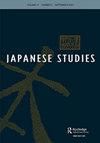Haruki Murakami and His Early Work: The Loneliness of the Long-Distance Running Artist
IF 0.4
Q3 AREA STUDIES
引用次数: 0
Abstract
schools, Chinese schools, schools for Brazilians, schools for South Americans, and International Schools. Okano states that these nonformal schools provide additional education for students who are struggling, and provide a place of belonging. They help maintain the culture and heritage language for migrant children. There have been attempts to bridge nonformal education with formal education. One example is the Rainbow Bridging Program, which connected three Latin American schools with one university, several non-profit organizations, two school boards, two Anglican youth organizations and one welfare organization. This project helped migrant children learn both Japanese and their mother language so the students could enter formal learning institutions. Even though there have been more programs and initiatives to help migrant and marginalized students, Okano points out that for various reasons such as a curriculum that is not relevant to some students are not able to take advantage of these initiatives. Even if these students are able to attend formal education schools, the curriculum is often not relevant to their concerns. I believe this book is a valuable contribution to the English literature on the present state of Japanese education. Okano demonstrates an extensive knowledge of the field and her writing is thoughtful and well argued. This book deserves to be read by anyone interested in recent developments in Japanese education.村上春树及其早期作品:长跑艺术家的孤独
学校、中国学校、巴西学校、南美学校和国际学校。Okano表示,这些非正规学校为那些正在挣扎的学生提供了额外的教育,并提供了归属感。它们有助于维护移民儿童的文化和传统语言。有人试图将非正规教育与正规教育联系起来。彩虹桥计划就是一个例子,它将三所拉丁美洲学校与一所大学、几个非营利组织、两个学校董事会、两个圣公会青年组织和一个福利组织联系起来。该项目帮助移民儿童学习日语和母语,使学生能够进入正规的学习机构。尽管有更多的项目和举措来帮助移民和边缘化学生,Okano指出,由于各种原因,比如与一些学生无关的课程,他们无法利用这些举措。即使这些学生能够进入正规教育学校,课程也往往与他们的担忧无关。我相信这本书是对英国关于日本教育现状的文献的宝贵贡献。冈野展示了她对该领域的广泛知识,她的写作深思熟虑,富有争议。这本书值得任何对日本教育的最新发展感兴趣的人阅读。
本文章由计算机程序翻译,如有差异,请以英文原文为准。
求助全文
约1分钟内获得全文
求助全文

 求助内容:
求助内容: 应助结果提醒方式:
应助结果提醒方式:


